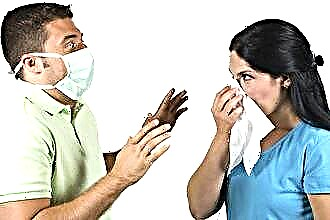With the development of degenerative-destructive processes in the upper parts of the spinal column, pains of varying intensity may occur. In some cases, they radiate to the front of the chest and provoke sensations similar to an attack of angina pectoris. Let's figure out together how to distinguish heart pain from osteochondrosis.
Causes and nature of heart pain in osteochondrosis
Osteochondrosis is usually called a chronic and slowly progressive deviation that affects the discs between the vertebrae and leads to their destruction.
The reasons for the development and provoking factors of the disease are well known:
- Traumatization. Violations develop against the background of fractures, bruises, severe concussions, the performance of the same type of movements.
- Congenital anomalies in the structure of bone and connective tissue.
- Autoimmune connective tissue diseases (systemic collagenoses).
- Vascular lesions with impaired trophism of intervertebral discs.
The provoking factors are:
- excess weight;
- muscle diseases accompanied by atrophy;
- low physical activity;
- improper diet;
- forced finding in one position for a long time.
The pain when the nerve endings are pinched can be of varying intensity, depending on the patient's pain threshold and the degree of damage to the conductive fibers. It has a pressing, stabbing character, sometimes described as a lumbago. The duration is also different - from a couple of seconds to several days. Strengthening it is observed when turning or tilting, during breathing or coughing. When probing along the nerve, a significant aggravation of the problem occurs. Relief comes after taking analgesics or anti-inflammatories.
Many people have a question whether the heart can hurt with osteochondrosis.
This phenomenon is observed in two cases:
- Disruption of the work of the nerve endings of the myocardium, when infringement or irritation of the vegetative nodes by a disc that has gone beyond the spine is carried out.
- Changing the conduction of impulses along the upper chest and left arm. In this case, cardialgia occurs reflexively.
To understand how the heart hurts with osteochondrosis, it is necessary to learn that the problem is of a purely neurological nature, which resembles an attack of sciatica. For this reason, taking "Nitroglycerin" does not help, but pain relievers provide significant relief.
Heart disease to rule out
Diseases associated with impaired heart function often manifest themselves in the same way as osteochondrosis. Since some pathologies are acute, and in a neglected state can lead to organ failure and even death of a person, they should be considered in more detail.
Ischemic heart disease
Pain from angina pectoris ("angina pectoris") lasts 15 minutes. It is stopped by the intake of "Nitroglycerin", it has a pressing, baking character. It is provoked by psycho-emotional stress, but can develop as a result of physical exertion. It is localized behind the sternum, given to the hand, under the scapula, the left side of the neck, jaw.
A heart attack is characterized by a severe painful attack, sweating, pale skin, blue nasolabial triangle, shortness of breath develops. The duration of an episode ranges from 1–2 hours to several days. Not removed by anti-inflammatory drugs and "Nitroglycerin", causes fear in the patient (which is usually not observed even with a strong exacerbation of osteochondrosis).
Pericarditis and myocarditis
With inflammation of the pericardium, the pain tends to increase, it can last for several days. It is not stopped by nitrates and NSAIDs. Shortness of breath, cough, tachycardia gradually joins. In contrast to the lesion of the spine, when the patient tries to take a horizontal position, the patient's condition always worsens. Read more about pericarditis and its symptoms here.
Myocarditis proceeds against the background of general weakness: signs of an inflammatory process come first. The pain is often dull, aching, and is not relieved by taking pain relievers. Torso bends and torso rotations do not alter the patient's experience.
VSD
Vegetovascular dystonia can resemble the symptoms of osteochondrosis. Discomfort in the chest area and lack of air in this case occur both during exercise and in a calm state. Often the attack is preceded by a stressful situation. Improvement occurs after taking sedatives, or the pain goes away on its own, without any treatment. It is often observed in people with a labile nervous system. At the same time, with such a pathology, sleep disturbance, irritability, decreased performance, and dependence on weather conditions are noted.
What is VSD and how to live with it: the video on the link below will help to get rid of unnecessary medications and false predictions.
Thromboembolism and aortic aneurysm
When the pulmonary artery is blocked by a thrombus, the symptomatology depends on the size of the lumen of the vessel turned off from the circulation. Often the pain resembles angina pectoris or a heart attack with a typical irradiation in this case; less severe suffering can simulate a pinching of a nerve hernia in the spinal column. But the difference from osteochondrosis is the ineffectiveness of anti-inflammatory therapy and accompanying symptoms (swelling of the cervical veins, pallor, tendency to faint).
Acute and unbearable pain is often the main and main symptom of dissecting aortic aneurysm. It occurs behind the sternum, spreads to the back, and can radiate to the abdomen and lower extremities, depending on the location of the lesion. Its intensity is not reduced with the use of analgesics or NSAIDs, as well as at rest.
How to recognize the source of pain
When going to see a doctor, I recommend listening to your feelings and answering yourself the following questions:
- how severe the pain is;
- how long has it been going on;
- what triggered the onset of the attack;
- how can the sensation be described;
- where to give;
- after which it becomes stronger;
- what drugs relieve the condition.
Intensity and duration
How to recognize cardiac problems and distinguish them from osteochondrosis? Long-term discomfort characterizes running destructive changes in the spine, but can occur with inflammation of the muscles of the heart and pericardium, with blockage of the pulmonary artery, or in the event of a heart attack. Therefore, with the help of these symptoms, it is not always possible to determine the preliminary diagnosis. You should pay attention to provoking factors. If the condition worsens after a sharp rise of a heavy object, as a result of hypothermia or prolonged exposure to one position, then this is osteochondrosis. Sudden, severe chest pain is a sign of PE, acute aortic aneurysm, or heart attack.
Psychoemotional stress or a sharp change in temperature often provokes angina pectoris.
Irradiation
Irradiation with angina pectoris or heart attack in the classical version is observed on the left: it is given to the arm, lower jaw, under the scapula, into the neck. But I often saw the same symptoms during exacerbation of osteochondrosis. Therefore, detailing of complaints is needed.
If the problem goes away after taking a horizontal position or taking anesthetic, cardiac pathology is excluded. But the emergence of baking sensations simultaneously with sweating, fear of death, some relief in a sitting position, indicates an ischemic heart disease.
Surveys
The standard of diagnosis here is the electrocardiogram.I always refer patients with chest pain for an ECG, as the most important thing is to rule out cardiac pathology. If necessary, you have to do coronary angiography, it helps to clarify the presence and degree of narrowing of the coronary vessels. You can read in detail about the signs of angina pectoris on the film here.
Radiography can provide some information about the changes. To clarify the localization of the lesion in the spine and the degree of osteochondrosis, MRI or CT are used. The layered image helps to reliably identify all problems with the vertebral bodies and discs between them.
How to relieve pain
To relieve pain in osteochondrosis are used:
- Non-steroidal anti-inflammatory drugs (Ibuprofen, Diclofenac).
- Muscle relaxants ("Mydocalm").
- Blockades with Novocaine or Lidocaine.
- Physiotherapy (electrophoresis, iontophoresis).
- Spinal traction.
- Wearing a corset.
After removing the acute condition, the patient is recommended a course of massage. Sometimes manual therapy helps, but you should be careful here, as it should be carried out by a very experienced specialist. Performing exercise therapy exercises allows you to consolidate the result.
To relieve pain in cardiac pathology, the following are used:
- Nitrates for vasodilation ("Nitroglycerin").
- "Aspirin" if a heart attack is suspected and narcotic analgesics if confirmed.
Expert advice
If there is severe pain behind the sternum, which radiates to the arm, under the scapula and is accompanied by shortness of breath, I advise you not to panic. You need to sit down or lie down and try to relax. In the event that after taking the drugs "Nitroglycerin", "Validol" or "Corvalol" it does not go away, you need to call an ambulance - it may be a heart attack.
A few words about osteochondrosis: destructive changes in the spine cannot be cured. But it is quite possible to significantly improve the quality of life and slow down the development of the disease for many years. To do this, I recommend doing the following:
- When sitting, choose a hard chair. The back should be fully supported by it.
- If the work is associated with a forced monotonous position, you should do a light warm-up every 2-3 hours.
- For reading, you need to use a book holder so that your head does not tilt down.
- Go in for sports (swimming is best for the spine).
Clinical case
A 29-year-old patient came to the appointment with complaints of severe pain in the heart. There is no history of congenital cardiac pathology. The feeling of pressure and burning arose in the process of doing strength fitness. No abnormalities were found on the ECG; palpation noted an increase in pain near vertebra 4-5 in the thoracic segment and along the intercostal nerve on the left.
X-ray revealed curvature and deformation of the thoracic region, as well as indirect signs of osteochondrosis. He refused to undergo an MRI scan. Received treatment: "Diclofenac", "Midocalm". After two weeks of therapy, there was an improvement, the pain stopped. Recommended: stress reduction, massage course and physiotherapy exercises.



